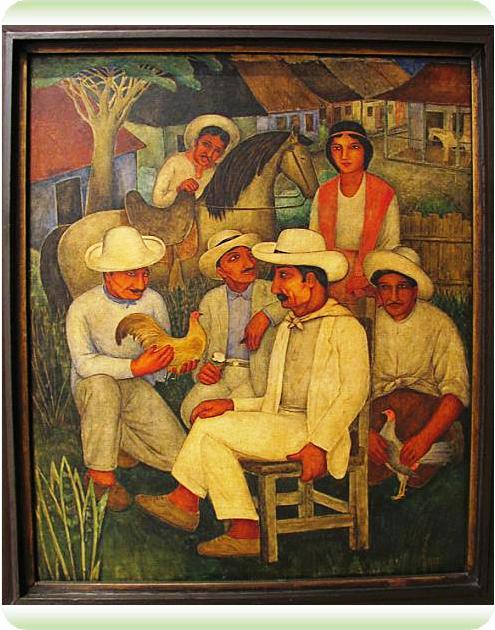
The composition is almost circular, compact. The eyes follow a spiral line that starts on the shoe of the man seated in the foreground and ends at the rooster held by another. There is peace, vestiges of good conversation, and in the background a village of wood and palm leaf huts. Six Cuban peasants have been represented in this painting by Abela, as well known as it is plagiarized. Their faces are tanned by the sun and vaguely indigenous. They are magnetic, irresistible. Our gaze takes us to the details of their clothing. “Dressed to the nines,” impeccable sombreros, long sleeves, perhaps with the fabric starched for the occasion.
Infected by the familiarity of the painting, I go to the countryside, put myself in the furrows where so many times I have picked tobacco, beans, garlic… I go in search of the primordial unity of Cubanness that is rural man However, under the scorching sun of August, instead of “Abela’s guajiros,” I find people dressed in military garb. Olive-green pants, shirts that lost their epaulettes long ago, old berets from some battle that never happened. They don the uniforms of the Armed Forces or the Ministry of the Interior to face the rigors of the fields. They don’t have many choices.
In the informal market it’s easier to buy an official jacket than a shirt for farm work. A police cap costs less than a straw sombrero. Belts made out of cowhide are also a thing of the past; today it’s easier and cheaper to find those used in the army. The situation is the same for shoes. Rubber boots are scarce and instead the men and women of the land wear shoes designed for the trenches and combat. In a militarized country, even in the smallest details the military prevails over tradition.
State centralization was drying up the autonomous production of clothes designed for farming. Not even the recent relaxations for self-employment have encouraged this production. It is not just an issue of economics or supply, this situation also affects questions of our national idiosyncrasies and popular customs. A current version of Abela’s painting would leave us with the impression of a looking at a militia group in tattered clothing posing for the painter in the middle of an encampment… about to sound the reveille.
23 August 2013
